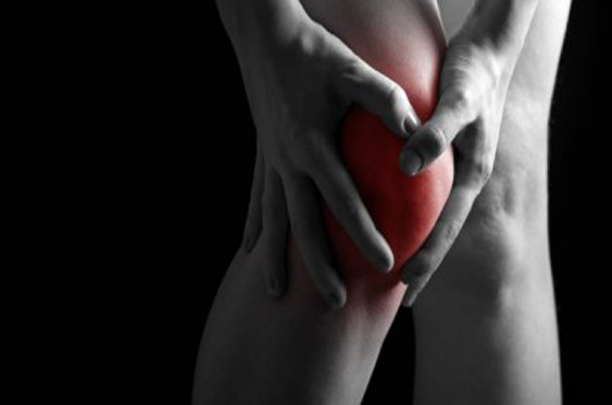Knee Pain: A Symptom Guide

The knee is the largest joint in your body and the one that bears most of your weight.
Because of this, it’s a tough — and sometimes problem-prone — joint.
When you are feeling knee pain, how do you know what caused it?
Your doctor’s diagnosis is the ultimate answer, but there are some clues to get you started on determining the cause.

Osteoarthritis
According to the CDC, nearly half of all people will experience symptoms of osteoarthritis at some point in their lives.
That’s why it’s important to know the symptoms of knee osteoarthritis:
- Intermittent pain that gradually gets worse
- Pain that appears or gets worse when strain is put on the joint
- Pain in just one knee
- Stiffness, especially after a period of inactivity
- Swelling
- A knee that locks or gives out
Bursitis
When the thin, fluid-filled sac that protects the joint (known as a bursa) becomes infected or inflamed, this is bursitis.
Many of the symptoms of knee bursitis are similar to osteoarthritis, but there are a few distinctive characteristics:
- A swollen region on the knee that’s “squishy” to the touch
- Tenderness when pressure is put on the knee
- Warmth or redness
- Fever or illness, which is a symptom of an infected bursa (also known as septic bursitis)
Knee pain from an injury
Damage to the muscles, ligaments, tendons, and cartilage of the knee can cause pain if these tissues are overused or receive a blow or other injury.
This is particularly true in the case of these common knee injuries:
- A tear in the knee’s anterior cruciate ligament (ACL)
- A patellar tendon injury, also known as “jumper’s knee”
- Damage to the tendon between the kneecap and femur (thigh bone), known as patellofemoral pain syndrome (PPS) or “runner’s knee”
- A tear in the pads of cartilage in the knee known as the meniscus
Rheumatoid arthritis
Rheumatoid arthritis is a system-wide condition in which the immune system is attacking the joints and causing inflammation. So when rheumatoid arthritis shows up in the knee, chances are the smaller joints in the hands and feet have already been affected by pain and inflammation.
Rheumatoid arthritis in the knees can cause:
- Pain and inflammation in both knees at the same time
- Knees that are swollen, red, or warm to the touch
- Stiffness in the morning, which can last 30 minutes or more despite light activity
- General fatigue
- Fever
If you’re experiencing pain that’s not relieved by a few weeks of self-care using NSAID pain medications and the RICE (rest, ice, compression, elevation) method, make an appointment with us, we can help with all different types of pain, help find the underlying causes, and find the right treatment plan for you.
Article credit: Arthritis Health
At Ohio Healthcare Partners we don’t simply address the symptoms of your pain and discomfort. Instead, we take an integrated medical approach to treatment so that you can eliminate your pain permanently.
OUR DYNAMIC THERAPY IS HELPING MANY PEOPLE SAFELY AVOID MEDICATIONS & EVEN SURGERY FOR THEIR PAIN!
Our techniques are proven to be much better than simply masking your pain with drugs or using invasive surgical procedures that take weeks or even months of recovery and downtime from your daily life.



